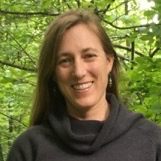How do we improve reading and math scores? By focusing on more than just reading and math

By Emily Ferry, AASB STEPS Coordinator
School board members, administrators, teachers, and parents often want to know how to best boost students’ reading and math scores. A number of recent studies have identified some unexpected pieces to the puzzle.
When Pat Sidmore arrived at AASB this fall, he dove into the treasure trove of School Climate and Connectedness Survey data to discover roughly 23% of language arts scores are linked to school safety.
“I was surprised,” said Sidmore, who is currently serving as the STEPS Alaska Data Coordinator. “The data clearly shows that improving school safety and climate can profoundly impact academic outcomes.”
Schools can have an even bigger impact by being safe, comfortable, welcoming places not just for students, but for families too. Research shows that when families and schools partner for children’s learning, their academic outcomes can grow by 20%.
Developing meaningful family partnerships is one high-impact approach to improving academic outcomes that will be highlighted in AASB’s new 30-second TV spots running on KTOO’s Gavel to Gavel program during the legislative session.
Other spots emphasize how experiences and partnerships “outside” of school can help support successful academic outcomes.
One spot features the importance of early childhood experiences, noting that by age six a child’s brain is 95% of its adult size.
A third spot underscores research that found that high schools students who participate in dual credit classes are more likely to enroll in and graduate from college.
See all six of AASB’s 2019 Gavel Alaska TV spots here.
Great teachers and solid curriculum are of course central to the success of any student, but the research is clear; in order to deepen our impact with students, we need to think about supporting the whole child, from the cradle to the world.
What you can do
- Support robust participation in the School Climate and Connectedness Survey, which is being administered in 32 districts across the state over the next two months. Many districts are surveying students, staff, and families. Contact Jenni Lefing, jlefing@nullaasb.org, 907 463-1660, to learn who your district survey coordinator is and how you can help generate meaningful results for your district,
- Think about how your school district develops a two-way relationship with families. How do schools welcome families? How do they reflect the cultural values and cultures of the communities they serve? And how do they help parents have the tools they need to support their kids?
- Ask how your district could help kids feel safer by incorporating Trauma Engaged practices. Check-out the Trauma Engaged Framework recently published by the AASB, statewide partners, and the Alaska Department of Education and Early Development.
# # #
